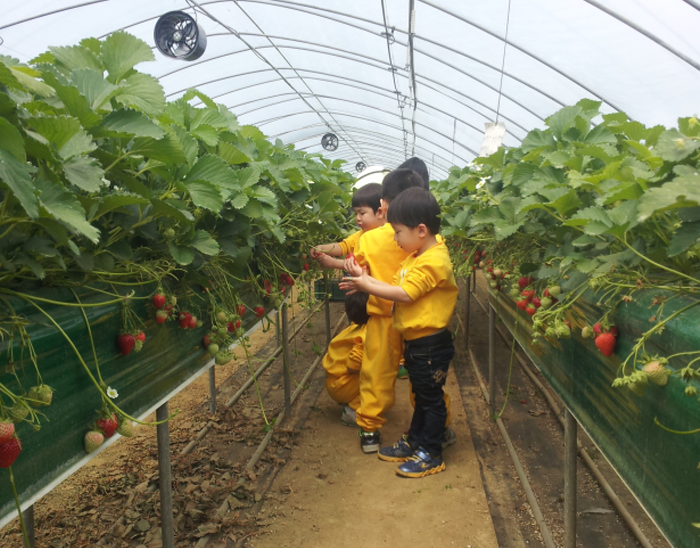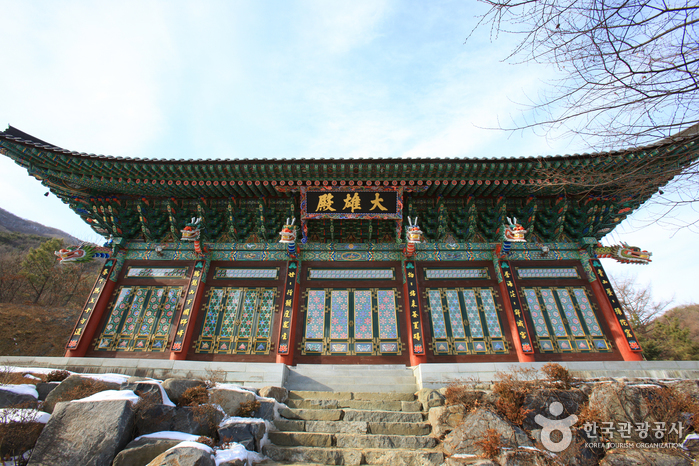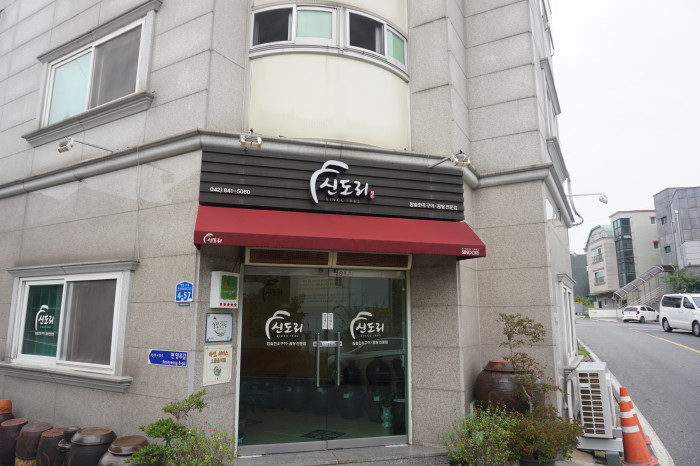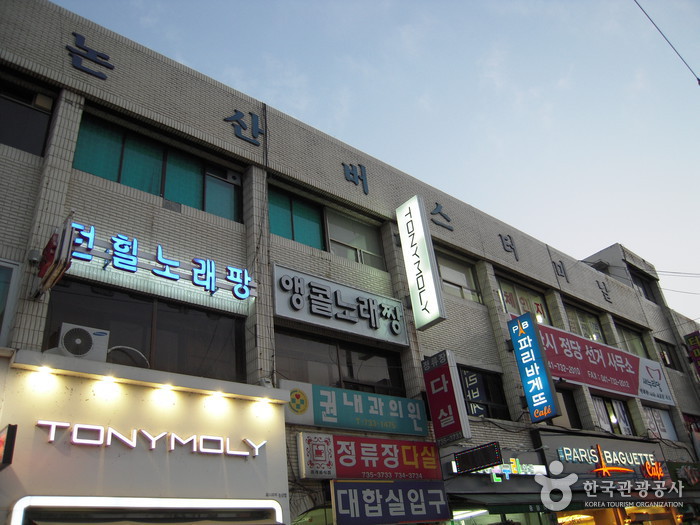Maison Myeongjae[Korea Quality] (논산 명재고택 [한국관광 품질인증])
0m 10549 2023-04-13
50, Noseongsanseong-gil, Noseong-myeon, Nonsan-si, Chungcheongnam-do
+82-41-735-1215, +82-10-6310-1139
Located in Noseong-myeon, Nonsan-si, Chungcheongnam-do, Myeongjae Historic House was built by Yun Jeung (pen-name: Myeongjae, 1629-1714), a scholar during the reign of King Sukjong (r. 1674-1720) of the Joseon Dynasty. It is said that although the king granted him a government post on eighteen occasions, Yun, being a straightforward sort of person, declined them all. As he practiced the virtue of simplicity and sharing in life and taught it to younger generations, the house escaped destruction during the Donghak Peasant Revolution (1894) and the Korean War (1950-1953) thanks to the efforts of his disciples. Thus, in keeping with his character, the house looks moderate compared to the homes of other aristocrats, although it exhibits a refined interior and a scientific design. The house consists of a sarangchae (men’s quarters), anchae (women’s quarters), and daecheongmaru (main floored room) configured in a square layout. The sarangchae itself consists of the keun sarangbang (large room) flanked by a daecheong and a numaru with an open view of the village and a mountain, the jakeun sarangbang (small room), the ansarangbang (inner room), and the daemungan (gate). To the right of the house is the spectacular sight created by a platform filled with hundreds of crocks for traditional sauces and condiments. The wall situated between the sarangchae and the anchae was designed to prevent people from looking into the anchae. There is also an open space below the wall from which one could see the shoes of a visitor, thus enabling the occupants of the anchae to know whether there was a visitor or not in the sarangchae. In addition, the gotganchae (storage quarters) situated next to the anchae is designed in such a way that it diminishes in size towards the north because the summer wind blowing from the south escapes the narrow passageway of the north, so it blows faster and the surrounding area gets colder, while the wind winter blowing from the north escapes the large passageway of the south, protecting the building from the bitter wind of the north. Therefore, the storeroom at the north end of the gotganchae remains cool even in summer, thereby preserving the things (food and other commodities) stored there. The guestrooms of the house include the three sarangbang rooms in the sarangchae building and the geonneonbang (a room opposite the main living room) in the anchae. The entire sarangchae building including the numaru can be rented too. Guests can also rent the thatched-roof byeolchae in the courtyard, which features a choyeondang equipped with a sound system and a beam projector, as well as a modern bathroom, for group meetings or performances. The house also runs a variety of paid traditional experience programs including Gukak (Korean classical music), tea ceremony, natural dyeing, and so on. Other noteworthy features of the house include the sarangchae’s distinctive gate, which combines a sliding door with a hinged door, the looming presence of a mountain to its rear, and the little round island (pond) planted with an old crape myrtle at its front.
Baek il heon Head House [Korea Quality] / 논산 백일헌 종택 [한국관광 품질인증]
1.9 Km 9208 2020-09-08
45, Jugok-gil, Sangwol-myeon, Nonsan-si, Chungcheongnam-do
+82-41-736-4166 / +82-10-2911-4166
The Baegilheon Head House (National Folklore Cultural Heritage No. 273) is the house that was bestowed upon General Yi Sam by King Yeongjo in recognition of his achievement in suppressing the Yi In-jwa Rebellion in 1728. King Yeongjo also granted Yi Sam the posthumous name ‘Baegilheon’. The house is composed of the munganchae (gate quarters) situated next to a tall gate, the ‘ㄷ’-shaped anchae (women’s quarters), and the ‘ㄱ’-shaped sarangchae (men’s quarters), which are configured in an overall square layout. The accommodation includes the munganchae, the araet sarang with a numaru (upper floor), and the wit sarang and the geonneotbang, each of which has a large toenmaru (a narrow wooden porch running along the outside of the building). Notably, the geonneotbang, which is connected with the daecheong (wooden floor) and has a cozy courtyard surrounded by a mud wall, was the living space for the eldest son of the family and his wife for many generations. As the house has been designated as a National Folklore Cultural Heritage, cooking in the guestrooms is strictly prohibited. However, the house provides breakfast prepared by the daughter-in-law of the head house free of charge. The toilets and shower room are situated in the back yard.
L’exploitation agricole de l’oncle Fraise (논산 딸기삼촌농장)
3.5 Km 3068 2021-05-28
423-9, Byeongsa-ri, Noseong-myeon, Nonsan-si, Chungcheongnam-do
+82-10-3884-4349
Comme tous les autres agriculteurs de fraises, l’oncle Fraise a, au début, fourni ses produits à des distributeurs détaillants comme les marchés, les centres commerciaux et les magasins discount. Cependant il a décidé de changer cela, et maintenant il rencontre les consommateurs lui-même sur ses terres et fournit directement ses fraises. Sans détaillants intermédiaires, l’oncle Fraise est maintenant capable de fournir des fraises de la plus grande qualité à des prix plus intéressants.
En 2006, l’oncle Fraise a commencé à gérer un programme d’activité dans son exploitation. Initiallement, il n’y en avait que 8, maintenant le nombre a sauté à 44. Durant des années, les terres de l’oncle Fraise ont fait pousser des fraises basées sur des méthodes agricoles totalement naturelles et respecteuses de l’environnement. L’oncle Fraise est un agriculteur determiné qui pense que le plus important est d’offrir les meilleurs fraises à ses clients. Avec cela en tête, il fait de son mieux pour faire pousser des fraises de grande qualité et bonnes pour la santé en utilisant des pesticides naturels. Ses produits sont certifiés bio.
Festival Sanshinje du mont Gyeryongsan (계룡산 산신제)
7.1 Km 640 2020-09-04
165, Yanghwa-ri, Gyeryong-myeon, Gongju-si, Chungcheongnam-do
• Ligne Info Tourisme : +82-41-1330 (coréen, anglais, japonais, chinois) • Pour obtenir plus d'info : +82-41-840-8090
Sur l’une des montagnes sacrées de Corée, le mont Gyeryongsan, se trouve le second parc national après celui de la montagne Jirisan.
Le mont Gyeryongsan regorge de charmes uniques à toutes les saisons. Au printemps, le mont se remplit de vitalité printanière et montre de magnifiques couleurs. La rue amenant au temple Donghaksa est particulièrement belle, entourée de cerisiers en fleurs. Le festival culturel des cerisiers du mont Gyeryongsan se déroule à cet endrois précis.
Temple Musangsa (무상사)
7.3 Km 4092 2023-04-13
129, Hyangjeoksan-gil, Eomsa-myeon, Gyeryong-si, Chungcheongnam-do
+82-42-841-6084
Le temple Musangsa est un lieu réputé notamment comme lieu de séjour pour les moines étrangers qui viennent effectuer des séjours pour pratiquer le Ganhwaseon (une sorte de bouddhisme zen). Il est aussi possible de participer à des programmes de 3 mois autour des traditions bouddhistes en Corée.
Les bouddhistes mais aussi les visiteurs peuvent prendre part à des activités de méditation pour une durée d’une semaine. Pendant cette période de méditation, les visites du public sont limitées. Le temple Musangsa, un temple zen international spécialement conçu pour les étrangers, fut créé par le moine Sungan en mars 2000 dans le but de promouvoir le bouddhisme zen coréen parmi le public étranger tout en encourageant et aidant les religieux non bouddhistes à faire l'expérience pratique du concept ‘zen’.
Situé au pied du moint Gyeryong, le temple est entouré par une forêt de pins, rendant le lieu parfait pour apprécier la beauté naturelle et originelle des forêts en Corée.
Evénements traditionnels Jeongwol Daeboreum à Nonsan - 논산 정월대보름 맞이 민속한마당 2015
9.0 Km 9350 2016-02-12
Chungnam, Nonsan-si
Centre culturel Nonsan 041-730- 4632, 732-2395
Afin de célébrer les vacances Jeongwol Daeboreum qui se tiennent pendant la plus longue période de pleine lune en Corée, le festival Jeongwol Daeboreum de Nonsan permet chaque année aux visiteurs de se familiariser avec les rites traditionnels en Corée durant cette période. Vous aurez ainsi l’occasion de participer à des jeux traditionnels coréens, le tout dans une ambiance festive.
Sindo-ri Hanuchon (신도리한우촌)
9.1 Km 110 2021-03-20
4-57, Beonyeong, 11-gil, Eomsa-myeon, Gyeryong-si, Chungcheongnam-do
+82-42-841-5060
A restaurant run for 35 years by a representative of fermented dishes. This Korean dishes restaurant is located in Gyeryong-si, Chungcheongnam-do. The most famous menu is grilled Korean beef.
Festival des fraises de Nonsan (논산 딸기축제)
9.2 Km 2998 2020-04-22
319-10, Daegyo-dong, Nonsan-si, Chungcheongnam-do
- Ligne Info Toursime +82-41-1330 (coréen, anglais, japonais, chinois)
Nonsan est la plus grande région productrice de fraise en Corée. Chaque année au mois d’avril s'y tient un festival mettant à l'honneur ce fruit plein de vitamine C. L’évènement qui attire de plus en plus l’attention des Coréens comme des étrangers, aura lieu cette année du 4 au 8 avril. Les fraises de Nonsan sont réputées pour leur goût et leur qualité. Les visiteurs pourront en cueillir autant que leur panier, ou leur estomac, puisse en contenir. Se tiendront également une exposition sur les fraises et beaucoup d'autres ateliers participatifs tels que celui sur la préparation d'un gâteau au fraise et de la confiture de fraise.
Terminal des bus interurbains de Nonsan
9.6 Km 6711 2015-11-09
1045-1 Chwiam-dong Nonsan-si Chungcheongnam-do
Bonsuwon Wangsutbulgalbi (수원갈비)
9.7 Km 521 2016-09-05
7-4, Jungang-ro 410beon-gil, Nonsan-si, Chungcheongnam-do
This restaurant is located at Meokjagolmok which is on the right side of Nonsan a cross-country bus terminal .Because it is built of wood and yellow earth, the inside is so warm and makes a traditional atmosphere. This restaurant accommodates 120 patrons and the kitchen and restroom are kept clean. All employee offer high quality service. Most of all , we can enjoy the abundant side dishes there.
![Maison Myeongjae[Korea Quality] (논산 명재고택 [한국관광 품질인증])](http://tong.visitkorea.or.kr/cms/resource/40/1878940_image2_1.jpg)
![Baek il heon Head House [Korea Quality] / 논산 백일헌 종택 [한국관광 품질인증]](http://tong.visitkorea.or.kr/cms/resource/98/2530098_image2_1.jpg)





 Français
Français
 한국어
한국어 English
English 日本語
日本語 中文(简体)
中文(简体) Deutsch
Deutsch Español
Español Русский
Русский